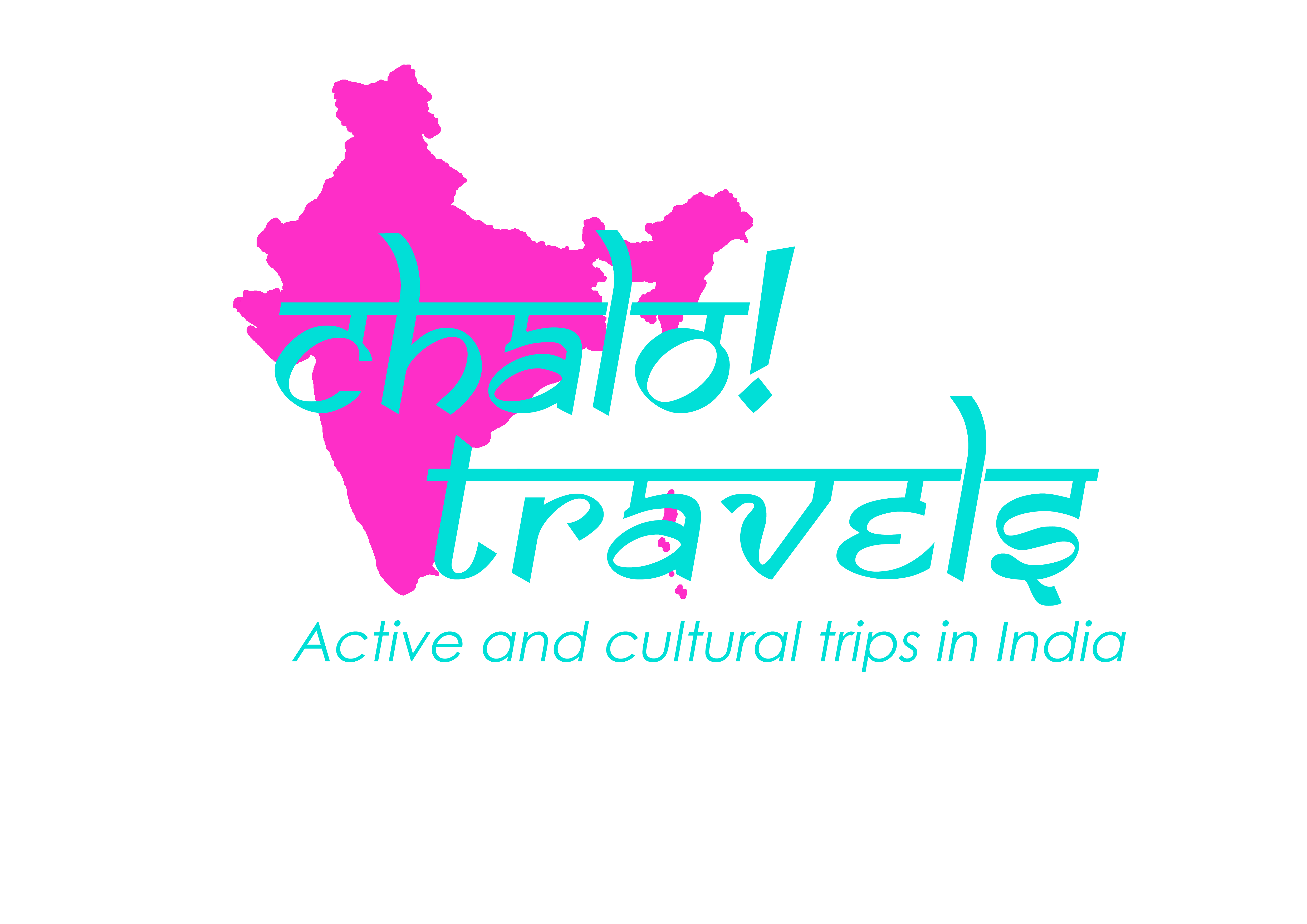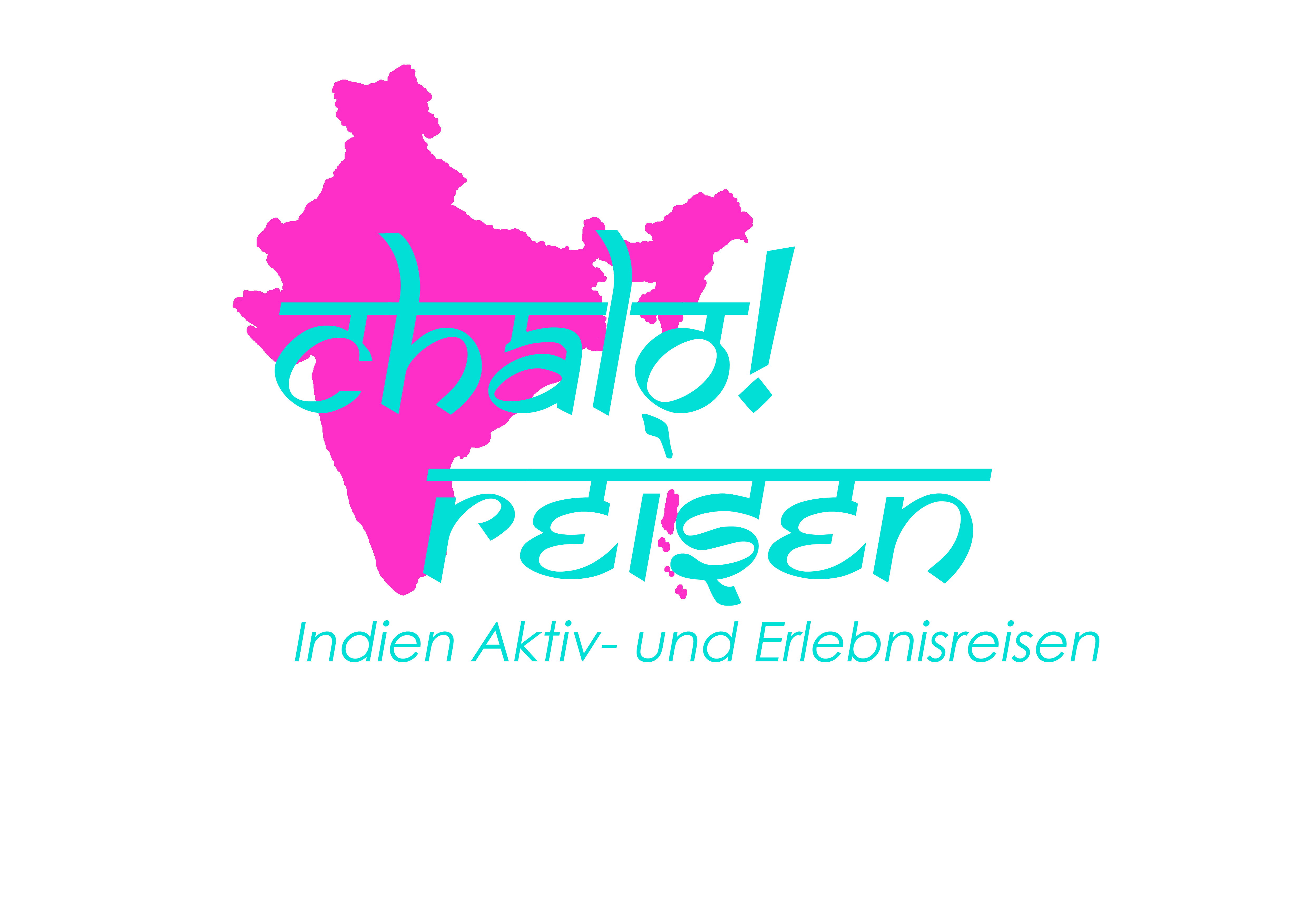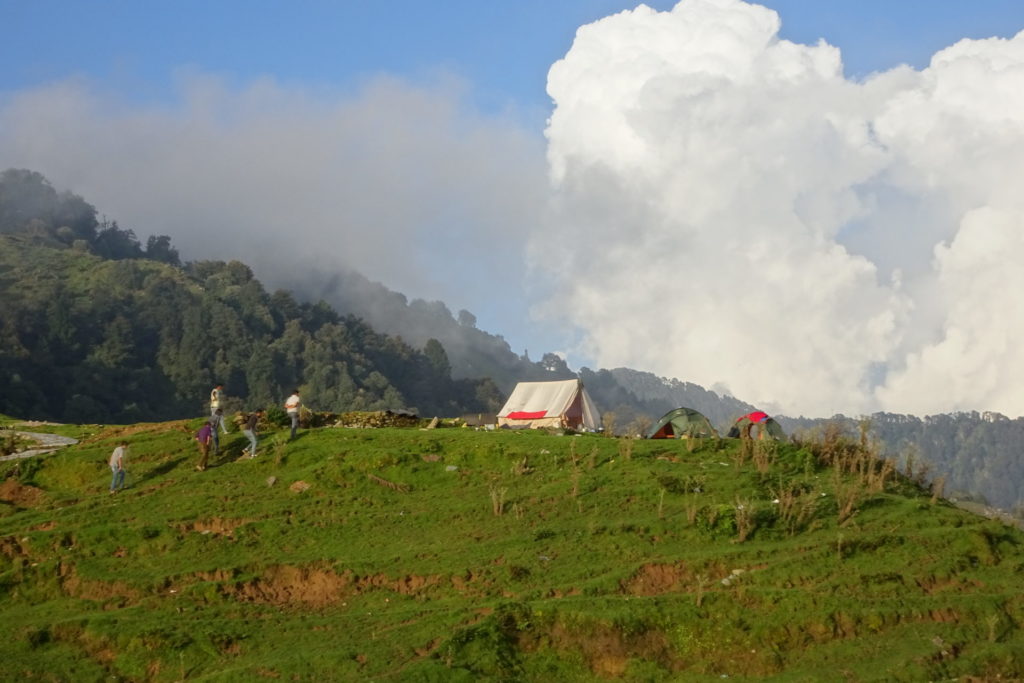- Sport & Abenteuer Reisen
- Klettern & Expeditionen
- Trekking Reisen
Overview
A wonderful trekking trip through the three valleys Hamta, Spiti and Lahaul. Between the individual treks there are short stages by jeep, during which we visit the cultural and scenic highlights of the unique mountain world of the state of Himachal Pradeshs.
During the first 4 days, we pass from Manali through the green Hamta valley over the Hamta Pass (4268 m) into the drier high mountain desert of the Lahaul Valley. From here, a vehicle takes us across Kunzum Pass (4550 m) into the tranquil Buddhist Spiti valley. For two days we will visit the surrounding villages with their ancient monasteries to get a glimpse of the hard secluded lives of the people.
Most villages are over 4000 meters. We will first stay 2 nights in Kaza at 3600 meters, the district capital of the Spiti, and then a night in Kibber, a village at 4200 meters. From where we start our three-days small expedition to the almost 6000 meter high Kanamo summit. Kanamo means “White Lady” and is actually a beautiful high mostly snow-capped mountain that rises above the village of Kibber. Mountaineering experiences are not necessary for this summit, it is a “simple” trekking summit.
After an amazing experience of a summit ascent, we will drive back towards Lahaul to continue our trek.
We walk to the crescent-shaped Chandratal lake, a beautiful azure mountain lake and from here in three days through two rivers we reach 4880 meter high Baralacha Pass. In two days we take the jeep through the Lahaul valley and over the Rothang Pass back to Manali, so that we can also get a glimpse into the lives of the people in the Lahaul valley.
This journey starts and ends in Delhi, but can also start and end as a travel module in Manali!
[threevalley]
Program
Day 1 Flight from your home country to Delhi
Day 2 Delhi Arrival, sightseeing and onward travel in the afternoon by overnight bus to Manali
Either at night or in the morning you will land at the international airport. You will be received by us at the airport and taken to the hotel. After some rest and breakfast we will explore on foot, with the rickshah and by metro Old and New Delhi. In the afternoon we continue 14 hours by night bus to Manali in the Himalayas. (Overnight stay on bus) B/-/-
Day 3 Manali Arrival and Sightseeing
We reach Manali in the morning and check into our hotel. After breakfast, you will explore. We visit the neighbouring village of Vashisht with its hot springs, the Hadimba Temple and New Manali. In addition, we will meet our trekking team and clarify the final details for our upcoming trekking tour. (Overnight stay in the hotel) B/-/-
Day 4 Drive from Manali to Prini (1900 m), 3 km from Manali
Prini to Sarotu (3100m) 6 Hours Trek
Today, after a short transport, our trek starts! It starts by passing through the tranquil village of Prini. Passing traditional houses on a small path, it goes higher and higher until we meet a curved road that leads up to a dam. We always walk between the road and small paths until we come to a small hut. Here we can rest and have a tea. It continues uphill through the last village in the Hamtatal. Now we have to follow a small road to the dam for a while. Then we cross a bridge and through the forest to our first camp. (Overnight in a tent) B/L/D
Day 5 Sarotu to Balu-Ka-Gera (3770m) 5 hours
At first it is relatively always along a river, which we also have to cross a few times over shaky bridges. Then it goes up relatively steep and we have the adventurous challenge to cross another river, this time without a bridge! We set up our camp near a small lake. (Overnight in a tent) B/L/D
Day 6 Balu ka Ghera to Shia Gauru (via Hamta Pass) (4268 m) 6 hours
Today we cross the famous Hamta Pass. Over rocks it goes higher and higher and the air becomes noticeably thin. Arriving at the top, we are surrounded by glaciers and snow-capped peaks. We descend into a side valley of the Lahaul. (Overnight in a tent) B/L/D
Day 7 Shia Gauru to Chattru and on to Kaza (3560 m) 4 hours
Today we have an easy day. We descend comfortably to Chattru, a resting place with a few small dhabas (simple restaurants) next to the raging Chandra river. Then we have 5-6 hours drive to Kaza via the Kunzum Pass (4550 ) into the Spiti valley. First we walk for two hours through the high mountain desert – here there is nothing but rubble, high mountains and the largest glaciers of Himachal Pradesh. After crossing the Kunzum Pass, we reach the first village of the Buddhist Spiti Valley. (Overnight stay in hotel) B/L/D
Day 8 Spiti Sightseeing
We drive to the southern edge of the Spiti valley and visit the 1000-year-old Buddhist monasteries of Tabo and Dhankhar and can even hike from Dhankhar to a small lake. Or we drive to the highest villages of the Spiti Valley to Langza, Hikkim and Comic! Hikkim has the highest post office in the world! (Overnight stay in Kaza at the hotel) B/L/D
Day 9 Drive to Kibber via Ki (20 km)
Today will be a quiet day. First, we head to Ki Monastery early in the morning to participate in the monks’ sacred ceremony in the prayer room. Later we continue to the village of Kibber.
In Kibber we live in a nice homestay with wonderful views of the mountain and the Kanamo summit – our next destination!
We stroll through the village to get an insight into people’s everyday lives. (Overnight at Homestay) B/L/D
Day 10 To the base camp of the Kanamo summit (4-6 hours) 5100 meters
Today we continue on foot. We will overcome almost 1000 metres of altitude to the base camp. It goes uphill continuously, but is never steep. Nevertheless, we will feel the height clearly! Already today we are rewarded with great views and maybe even spot a Ibex or a Blue Sheep! In the evening there will be delicious traditional dishes from the Spiti region (overnight in the tent) B/L/D
Day 11 Ascent of the Kanamo summit (5964 m) and descent to Base camp
A long day that takes us up to almost 6000 meters! The ascent is not technical, but it gets steeper and the air gets thinner and thinner! It will take 4-6 hours for the climb to enjoy the unique view of the fascinating Himalayan mountains!
Then we make our way back to Base camp to celebrate and enjoy our success here. (Overnight in a tent) B/L/D
Day 12 Base camp to Kibber
It will take us three hours back to Kibber. We start the day easy after an extensive breakfast. In Kibber we have time for some rest and relaxation from the intensive tour to the Kanamo summit and before our next trekking stage. (Overnight at Homestay) B/L/D
Day 13 Drive to Kunzum Pass (90 km) and trek to Chandratal Lake
We drive up to Kunzum Pass back through the Spiti valley. From the pass we walk down for about 2-3 hours to the beautiful Chandratal lake. The mountain lake is called Moon Lake and in fact its shape resembles a beautiful turquoise-blue crescent moon. Near the lake we will set up camp. (Overnight in the camp) B/L/D
Day 14 Chandratal to Tokpo Gangmo (4320 m) 5 hours
It continues through the deserted lunar landscape without major climb or descents. In front of the great Gangmo river we build our camp. (Overnight in a tent) B/L/D
Day 15 Topko Gangmo to Topko Yangmo (4640 m) 5 hours
Early in the morning we leave as we have to cross the river. Because in the morning the water level is lowest, because the ice of the glacier only melts during the day and thus the level rises. In the afternoon we reach the next river. We have a great view of the C.B. mountain range, the Mulkilla chain and the Dakha glacier. (Overnight in a tent) B/L/D
Day 16 Topko Yangmo to Baralacha Pass (4830 m) 5 to 6 hours and drive to Jispa (50 km)
Today we reach our last destination: the Baralacha Pass. It is 8 km long and three rivers spring from it: Chandra, Bhaga and Yuman. We reach our highest point of our trek. We get into the jeep and drive to Jispa. One of the first villages of the Lahaul valley. We live in a deluxe camp in tents with beds and attached bathrooms. (Overnight in the Deluxe Camp) B/L/D
Day 17 Sightseeing in and around Keylong (3350 m) and drive to Manali (135 km)
Today we visit Keylong, the district capital of Lahaul, as well as the Kardang Monastery, the largest Buddhist monastery in the area, where you can admire antique paintings, weapons and musical instruments. Inside is a life-size statue of Buddha. Over the Rothang Pass (3980 m) you return to the green Manali. (Overnight in the inn ) (B/-/-)
Day 18 Closed day in Manali and afternoon night drive back to Delhi
We enjoy the last day in Manali and are especially happy about the juicy greenery around us! In the afternoon we take the bus back to Delhi (overnight stay on the bus) B/-/-
Day 19 Arrival Delhi and transfer to the airport
We check-in for another day at the hotel. If we have time, we can continue to explore Delhi, then we go to the airport. Alternatively, you can continue to Agra to the Taj Mahal as a connecting tour. B/-/-
Services
- English-speaking travel companion
- all accommodations (2 x hotel in Delhi, 2 x Inn Manali, 2 x Hotel Kaza, 2 x Homestay in Kibber, 1 x Deluxe Camp in Jispa, during the trek in two-man tents)
- Meals as advertised (F: breakfast, M: noon, A: evening), always full board, except in Delhi, Manali and return from Jispa
- complete transport (Delhi/Manali in air-conditioned Volvo bus, otherwise Innova, Tempo Traveller or Sumo, taxi for airport transfer)
- Sightseeing in Delhi by rickshaw and metro
- Fully organized trek/expedition with:
- Mountain Guide, Cook, Helper, Horseman, Horses/Carriers
- Tent, Mattresses, Sleeping Bags, Kitchen Tent, Dining Tent
- Full catering, water filter
international flight, visa, insuranceunmentioned food and beveragesindependent transportsTip
Highlights

Hamta Pass Trek 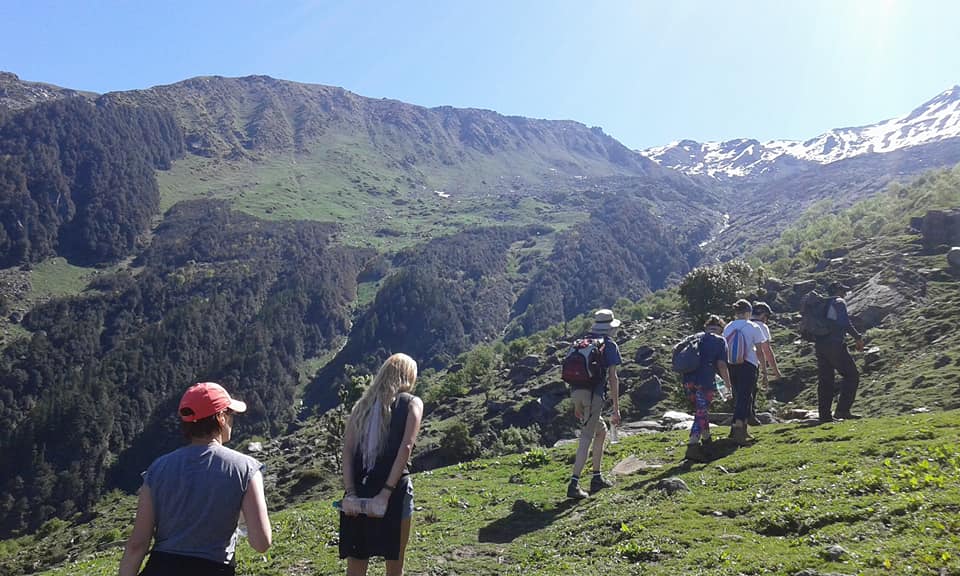
Hamta Pass Trek 
Hamta Pass Trek 
Hamta Pass 
Hamta Pass Trek 
Baralacha Pass Trek 
Baralacha Pass Trek 
Chandratal 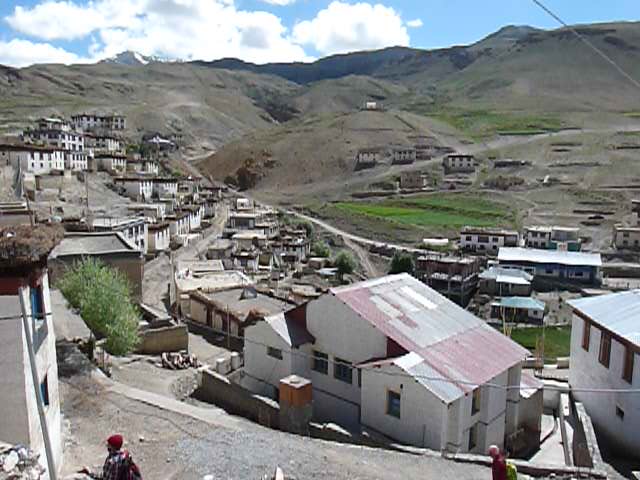
Kibber Village 
Ki Monastery 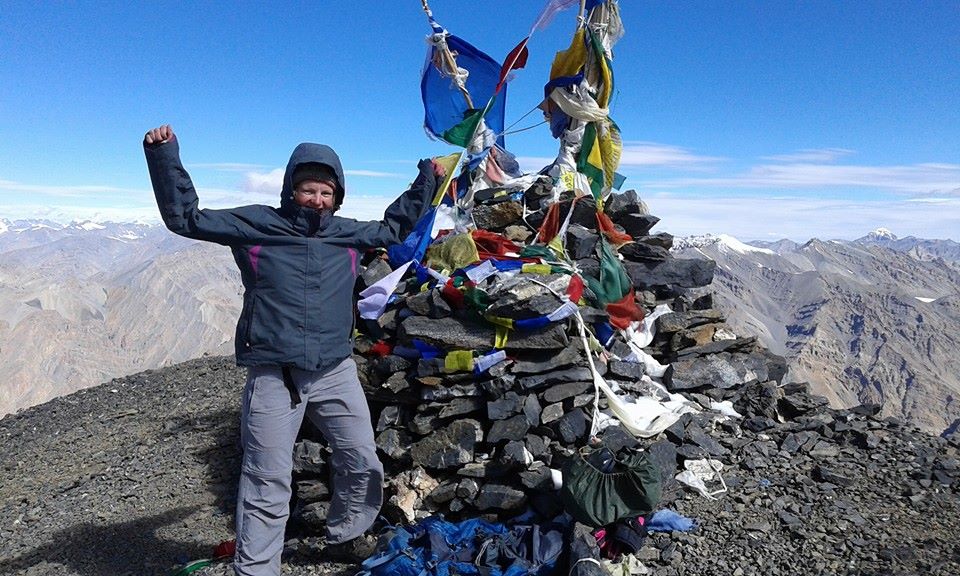
Kanamo Peak 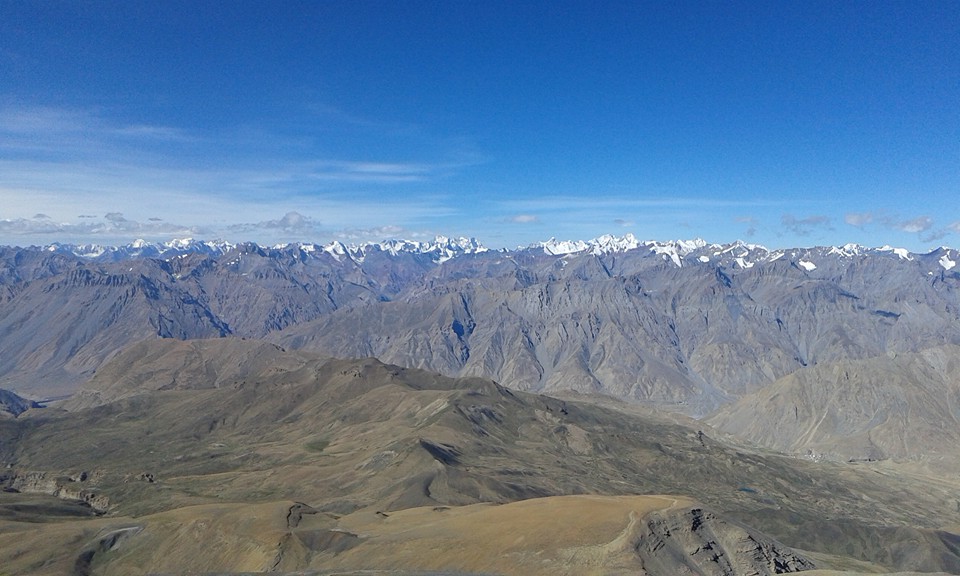
Kanoma Peal 
Baralacha Trek 
Kunzum Pass 
Baralacha Pass Trek 
Monastery
Prices and Dates
This trip is especially recommended during the monsoon season. While it rains in the rest of the country, it stays dry in the valleys of Lahaul and Spiti! The best time to visit is in the summer months from mid-June to the end of September.
For 2 Participants 1600 € pro Person
Tour Info
Requirements
For the treks a normal fitness level is sufficient, while the mountain ascent to the Kanamo demands great physical and mental strength, but not technical!
It partly goes through very remote regions with simple tent and home stay accommodation.
Information about the Trekking Tours with Chalo! Travels
Mountain guide and trekking team
On all our treks we have at least one (for larger groups of 6 participants two) trained local mountain guide. Our mountain guides have all completed at least the Indian mountaineering training, many of them have also completed the advanced courses.
They are familiar with the trekking routes and know the terrain excellently. All our mountain guides speak English.
In addition, there is a local team consisting of a cook (if the group consists of only two participants, the mountain guide also takes over the tasks of the cook), helpers, horsemen with horses or Nepalese porters, depending on the type of trek.
All our team members have been working with us for years, are very friendly and always strive to provide our guests with a great trekking experience. Their English (besides of the Guide) is rather mediocre or non-existent, but this is not necessarily a hindrance to communicating with them.
Trekking routes
The trekking routes are designed according the skills of our guests and are all feasible for a person with a good fitness level, unless otherwise mentioned. The daily routes are between five and eight hours long (with breaks) and an average increase of around 500-800 metres of altitude is completed.
In between, rivers may have to be crossed. The paths are partly well developed, but sometimes also almost non-existent. On our trekking routes there are hardly any villages in between, so we will take enough food for the whole tour.
On our treks we cross passes, snow or glaciers. On steep slopes, we have safety equipment with us.
Daily routine (Depending on the length and intensity of the trek, the times may vary)
7: 00 am Get up with Tea
7:30-8:30 am Breakfast
7:00-9:30 am Dismantling of the camp
8:00- 9:30 am Start Trek
1:00 pm Lunch on the way
3:00-5:00 pm Arrival at the camp and camp construction
3:30-5:30 pm Snacks
7:00 pm Dinner
Altitude and altitude sickness
Altitude sickness is a very important topic that should not be underestimated, especially during our trekking tours in the Indian Himalayas. At altitudes above 3500 m, our body has to slowly get used to the low air pressure, which also causes less oxygen to enter our lungs. The first signs of altitude sickness are headaches, which are accompanied by dizziness, nausea, insomnia and loss of appetite. It becomes problematic when water accumulates in the lungs and brain and edema occurs. Then only the immediate descent to lower altitudes will help. To prepare for the heights on our treks, we will either spend a few nights at high altitudes before the trek or slowly ascend during the trek to acclimatize. If we notice that there are problems with our guests (each person is otherwise able to acclimatize, regardless of age, gender and fitness level), it may happen that either the entire group or the concerned participant descends/returns with a team. In addition, it makes sense to take an emergency drug for altitude sickness. For this, it is best to consult the pharmacy or the travel doctor. For certain treks we will also have oxygen with us.
Luggage
Each trekking participant is responsible for his own clothes and personal belongings. Depending on the trek, we are either with horses or porters. If we have load horses, one bag per participant can be loaded onto the horse. In the case of treks with porters, all personal luggage must be carried independently. Tents, sleeping bags, mattresses and food are carried by our porters.
For trekking tours with horses, a day backpack with space for the lunchbox, a water bottle and warm overcoat clothing should be taken with you. Here to the complete packing list for our trekking tours.
Packing list for trekking tours
- sleeping bag at least -10°C
- large backpack or soft carrying bag so that the load animals can carry the luggage
- Small carrying backpack for the day approx. 30-40 l with rain protection
- flashlight/headlamp
- 2 refillable water bottles
- hiking poles
- passport and passport copy
- camera with spare battery and memory card
- headgear as sun protection
- Good Sunglasses
- cap
- Scarf, Buff
- Gloves
- wind-proof trekking pants
- trekking pants
- Functional Underwear Long
- hiking boots
- socks thick and thin
- sneakers, sandals and/or slats
- windbreaker
- Warm Jacket
- fleece sweater/jacket
- Tshirts
- sunscreen, lip balm min. Protection 40
- fat cream
- water purification tablets (boiled and filtered water is provided)
- own medications for headaches, nausea, digestive problems, colds)
- bubble patches and dressing material
- own hygiene articles
- Toilets Paper
- hand disinfection
Meals
During the trek there will be a vegetarian full catering. Water is either boiled or we have a water filter with us.
Breakfast (daily selection):
- Coffee/Tea
- Oatmeal porridge/muesli/cornflakes/Indian porridge
- Indian breakfast
- Sliced fruit/vegetables
Lunch (mostly lunchbox), sometimes warm in the camp
- Sandwiches/Indian (rice, chapati, vegetables)/potatoes
- Juices
- Chocolate
- Fruit
Snacks
- Tea/coffee
- Cookies
- French fries/Indian snacks
Soup
Dinner (depending on the length of the Trek mix of Indian/Chinese/Continental)
- Vegetable dish
- Lentil dish
- Rice/noodles
- Chapati
- Salad
- Dessert
Accommodation and camp
We have very comfortable and spacious two-man tents. Our mattresses are practical but simple if there are problems with sleeping on hard surfaces, please take your own mattress with you or order from us. Our sleeping bags are freshly washed and have a very good quality with comfort zone up to -5°C/extreme zone up to -20° C. It is recommended to bring personal indoor sleeping bags.
In addition, we have a spacious dining tent with tables and chairs, a kitchen tent for the team and a toilet tent. For treks up to 4 people, the kitchen tent can also act as a dining tent at the same time.
For trekking tours with porters, we will take our smaller, lighter tents with us and do without a toilet tent.
Weather
In the Himalayas, temperatures fluctuate widely. While it can get warm up to 25°C during the day and the sun is not only warming, but also very intense (sun protection is a must), it can also cool down significantly below the minus-grade at night, especially in the months end of September and October, as well as in June. There may also be weather changes with snow on the passes.
